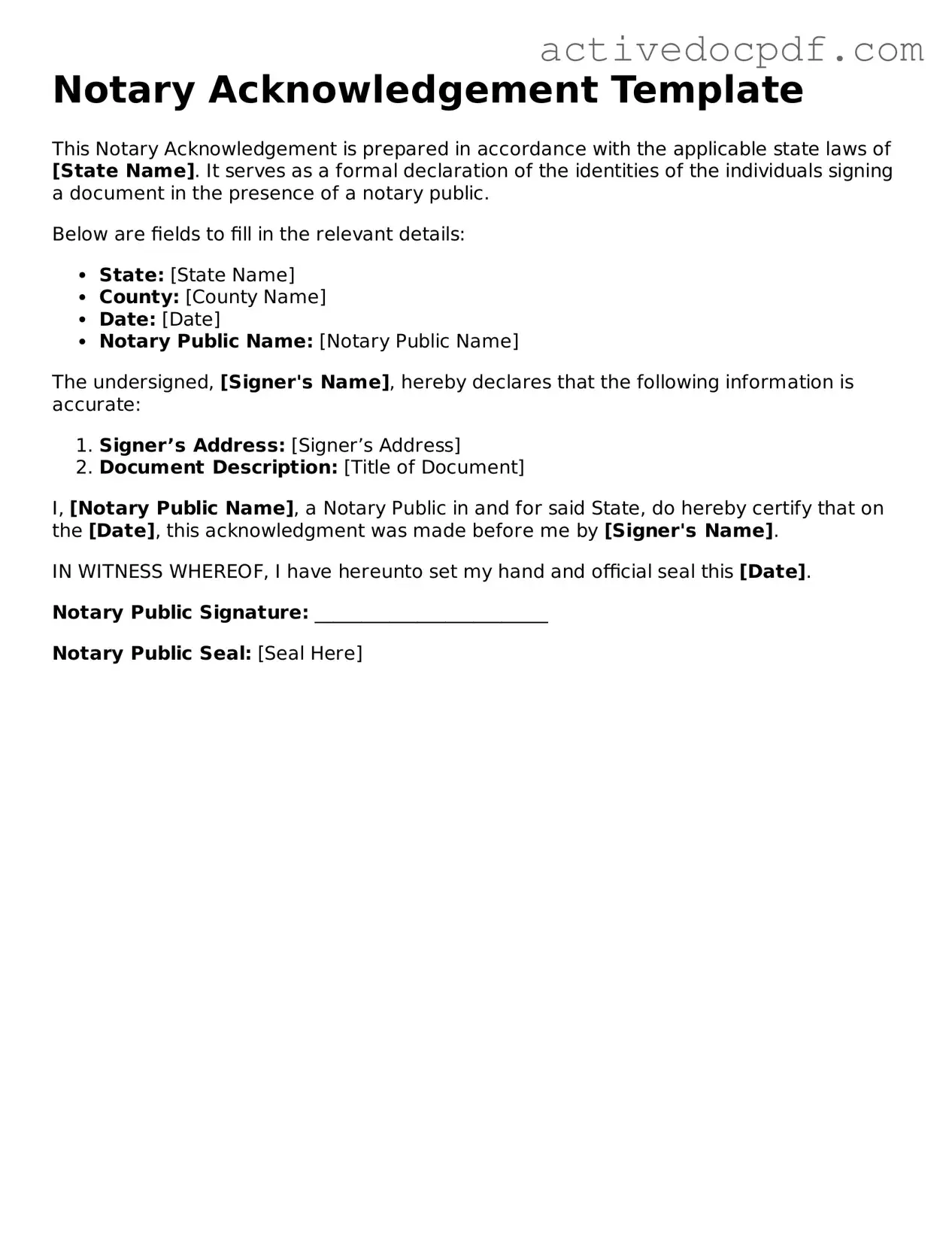A Notary Acknowledgement form is a document that verifies the identity of a signer and confirms that they willingly signed a document. It is often used in legal transactions to provide assurance that the signature is authentic. This form includes the notary's signature and seal, which lends credibility to the document being acknowledged.
When do I need a Notary Acknowledgement?
You typically need a Notary Acknowledgement when signing important documents such as:
-
Real estate deeds
-
Wills
-
Powers of attorney
-
Contracts
Any time a document requires verification of the signer's identity or intent, a Notary Acknowledgement may be necessary.
To complete a Notary Acknowledgement form, follow these steps:
-
Fill in the required details, including the name of the signer and the date of signing.
-
Sign the document in front of the notary public.
-
The notary will then complete the form by adding their signature and seal.
Ensure all information is accurate to avoid any issues during the notarization process.
Can a Notary Acknowledgement be done remotely?
Yes, many states allow remote notarization, especially in light of recent developments. In a remote notarization, the signer and notary interact through video conferencing. However, specific rules and regulations vary by state, so it is essential to check local laws regarding remote notarization.
What is the difference between a Notary Acknowledgement and a Notary Jurat?
A Notary Acknowledgement confirms that a signer personally appeared before the notary and acknowledged signing the document. In contrast, a Notary Jurat requires the signer to take an oath or affirmation regarding the truthfulness of the document's contents. Both serve different purposes in the notarization process.
Is there a fee for obtaining a Notary Acknowledgement?
Yes, notaries typically charge a fee for their services, including completing a Notary Acknowledgement. Fees can vary based on state regulations and the notary's discretion. It's advisable to inquire about the fee before scheduling an appointment.
Do I need to bring identification to the notarization?
Yes, you must present valid identification when obtaining a Notary Acknowledgement. Acceptable forms of ID usually include a government-issued photo ID, such as a driver's license or passport. The notary needs to verify your identity to complete the process.
How long is a Notary Acknowledgement valid?
The validity of a Notary Acknowledgement does not expire as long as the document it accompanies remains valid. However, if the document is time-sensitive or subject to expiration, it's essential to complete the notarization within that timeframe.
What should I do if my Notary Acknowledgement is rejected?
If your Notary Acknowledgement is rejected, first determine the reason for the rejection. Common issues include missing information or improper notarization. You may need to consult with the notary or seek assistance from a legal professional to resolve any issues and ensure proper notarization.
